Publication trends of primary angle-closure disease during 1991-2022: a bibliometric analysis
Hai-Li Huang, Guan-Hong Wang, Kai-Di Wang, Xing-Huai Sun,2,3
1Department of Ophthalmology & Ⅴisual Science, Eye &ENT Hospital, Shanghai Medical College, Fudan University,Shanghai 200031, China
2State Key Laboratory of Medical Neurobiology and MOE Frontiers Center for Brain Science, Institutes of Brain Science,Fudan University, Shanghai 200032, China
3NHC Key Laboratory of Myopia, Chinese Academy of Medical Sciences, and Shanghai Key Laboratory of Ⅴisual Impairment and Restoration (Fudan University), Shanghai 200031, China
Abstract
INTRODUCTION
Glaucoma is the leading cause of irreversible blindness worldwide[1].It is estimated that 76 million people were affected by glaucoma in 2020.Among them, approximately 25 million have primary angle-closure glaucoma (PACG) type[2].Although less common than primary open angle glaucoma(POAG), studies showed that PACG carried a three-fold increase in the risk of severe visual impairment or blindness on average, more than 25% of PACG patients progress to blindness[3].Asia accounts for approximately 77% of all PACG cases worldwide.The prevalence of PACG is highest in Asia (1.09%), followed by Latin America and the Caribbean(0.85%), Africa (0.60%), and Europe (0.42%).The PACG prevalence in Oceania (0.35%) and North America (0.26%) are the lowest[2].
While POAG is defined as acquired optic neuropathy associated with characteristic optic nerve structural damage and visual field loss in an eye that has no angle closure nor identifiable secondary cause[4], PACG is a completely different type with a distinct diagnosis.The International Society of Geographic and Epidemiologic Ophthalmology classified three categories.Primary angle-closure suspect (PACS) is an eye with narrow angles (>180° of the posterior pigmented trabecular meshwork not visible), without elevated IOP nor peripheral anterior synechiae (PAS).Primary angle-closure(PAC) is diagnosed in eyes with narrow angles, with elevated IOP and/or PAS, without glaucomatous damage of the optic nerve.PACG is PAC together with evidence of glaucomatous optic neuropathy[5].These continuum forms are generally referred to as primary angle-closure disease (PACD).The risk factors associated with PACD include ethnicity, older age,female gender, small cornea, shallow anterior chamber, thick lens, anterior lens position, and short axial length (AL)[6].To assess the presence of angle closure, gonioscopy is the most important method[7].However, the findings are subjective and vary with the light and mechanical compression of the eye during examination.Therefore, quantitative methods such as ultrasound biomicroscopy (UBM) and optical coherence tomography (OCT) have gradually become widely used in the last decades[8].OCT technology has developed rapidly recently,especially the swept-source OCT (SS-OCT), which largely improved image acquisition speed, resolution, scan depth and width[9].And additional improvements in OCT methods, such as OCT angiography (OCTA), made it possible to observe the retinal and choroidal vessels through OCT[10].These imaging devices help to find more anatomical features in the pathogenesis of PACD.
The clinical management of PACD includes medical treatment,laser therapy, and surgical approach[11].In addition to IOP lowering approaches such as trabeculectomy, protection of the configuration and function of anterior chamber angle (ACA)is unique and important in PACD management[12].Therefore,laser peripheral iridotomy (LPI), as well as lens extraction,have proven to be effective[13-14].Phacoemulsification and combined phacoemulsification, aiming to treat angleclosure disease with cataract procedures, have shown great efficiency in the reduction of postoperative IOP and medication use in recent years[15].And among the combined phacoemulsification procedures, combining phacoemulsification with goniosynechialysis (GSL) or with trabeculectomy have been discussed the most[16-17].
Bibliometrics analysis is a scientific and quantitative approach to tracking the publication trends in a specific research field over time[18-19].Such analysis can be used to compare contributions between countries, institutions, journals, and authors.It also includes co-word analysis and cluster analysis to summarize the progress and reveal the current hotspots or future trends.Bibliometrics research has expanded markedly in recent years due to its contributions to clinical guidelines and policymaking[20].However, few bibliometric studies have been performed on research related to glaucoma[21-23], and to date, no bibliometric studies have been conducted regarding PACD.
The purpose of this study was to present a comprehensive and visualized bibliometrics analysis of the trend and focus of global PACD research by analyzing publications from 1991 to 2022 obtained from the Web of Science Core Collection(WoSCC) database.This study would help researchers and specialists to understand the range and new topics in the field of PACD in general and guide them in future endeavors.
MATERIALS AND METHODS
Ethical ApprovalData from bibliographic information were searched and downloaded from WoSCC.These were publicly available data.The extraction of this data did not involve interaction with human subjects or animals.Thus, there were no ethical issues involving the use of these data, no approval from an Ethics Committee or written informed consent to participate was required.
Data Sources and Search StrategiesAll searches were conducted on a single day (Jan 15, 2023) to avoid biases introduced by the renewal of database.The WoSCC was considered to be the most suitable database for bibliometric analysis.Therefore, we comprehensively searched the WOSCC database from 1991 to 2022.The integration of search strategies was as follows: TS=(“primary angle-closure”) AND Language=English.Only the original articles and reviews in the database were included.Ⅴarious types of manuscripts,such as editorial materials, letters, corrections, news items,book reviews, and proceeding papers were excluded.Detailed enrolment and selection procedures are shown in Figure 1.
Data CollectionTwo reviewers independently conducted a preliminary search, WoSCC data including titles, keywords,publication dates, countries and regions, institutions, authors,publishing journals, and sums of citations were extracted and imported into Microsoft Excel 2010 (Redmond, Washington,USA) and ⅤOSviewer 1.6.17 (Leiden University, Leiden, the Netherlands) for bibliometric analysis.
Bibliometric AnalysisWoSCC was used to describe and examine the characteristics of all included publications.Microsoft Excel 2010 was applied to assess and rank the number of publications among different countries, journals,institutions, and authors.It was also applied to predict the growth trends of publications in the PACD field.The prediction model f(x)=ax3+bx2+cx+d was generated according to the cumulative publications to analyze time trends and future publication patterns.In this formula, x represents time (year)and f(x) denotes the cumulative volume of publications in a certain year[24-25].ⅤOSviewer, an application used to analyze correlations between literature, was used to map and visualize the network of related countries, authors, and keywords[26].Co-occurrence analysis uses the frequency of multiple words in the same article to identify how close they are, thereby demonstrating hot topics and trends in the discipline[27-28].The high‐frequency keywords were classified into disparate clusters according to co-occurrence analysis and simultaneously colorcoded by time course.The average publishing year (APY) was used to quantitatively evaluate how recent of the published articles from a country or author, as well as the novelty of a keyword[29-30].
RESULTS
Number of Global Publications and CitationDuring the 32 years from 1991 to 2022, a total of 1721 PACD-related articles met the search criteria in the WoSCC database.The distribution of articles was analyzed by year of publication (Figure 2).The results showed that the number of publications has increased overall from 4 in 1991 to 155 in 2022.Based on the citation report retrieved from the WoSCC database, all publications related to PACD have been cited 34 591 times since 1991, with an average citation frequency of 20.23 times for each paper.The distribution of citations also showed a significant increase from 1991 to 2022, with 4760 times cited in 2021 and 3980 times in 2022.
Countries’Contributions to Global Publication and the Growth Trends PredictionThe distribution of articles was further analyzed by country/region.China produced the most publications (554, 32.19%), followed by the United States(362, 21.03%), Singapore (288, 16.73%), India (224, 13.02%),and England (181, 10.52%; Table 1).Furthermore, in the past 32 years, the United States and Singapore published the most papers from 1991 to 2008, while China had published more papers than these two countries since 2009.Japan (120,6.97%) and Australia (107, 6.22%) also published more than 100 articles over the past three decades.More than 50 articles had been published in the Taiwan Region and South Korea.Time series analysis showed that the trend of publications from England, Japan and Singapore is earlier (APY of 2011-2012), followed by the United States, India, Australia and South Korea (APY of 2014-2015).The literature published in China was the latest (APY of 2016.63).The citation frequency per publication is high in England (42.98), Singapore (37.19)and USA (34.02), while the citation/publication rate in other countries range from 12.42 (Iran) to 21.63 (Australia).
The growth of PACD publications predicted by the model fitting curves demonstrated a significant correlation between time and the cumulative number of publications (Figure 3).In addition, based on the cumulative number of publications in the past 32y, the trends in the next 5y were estimated.The number of global publications was growing steadily and rapidly, which is consistent with the situation in several major countries, such as China and the United States.China has manifested faster growth, while Singapore and England increased slowly.
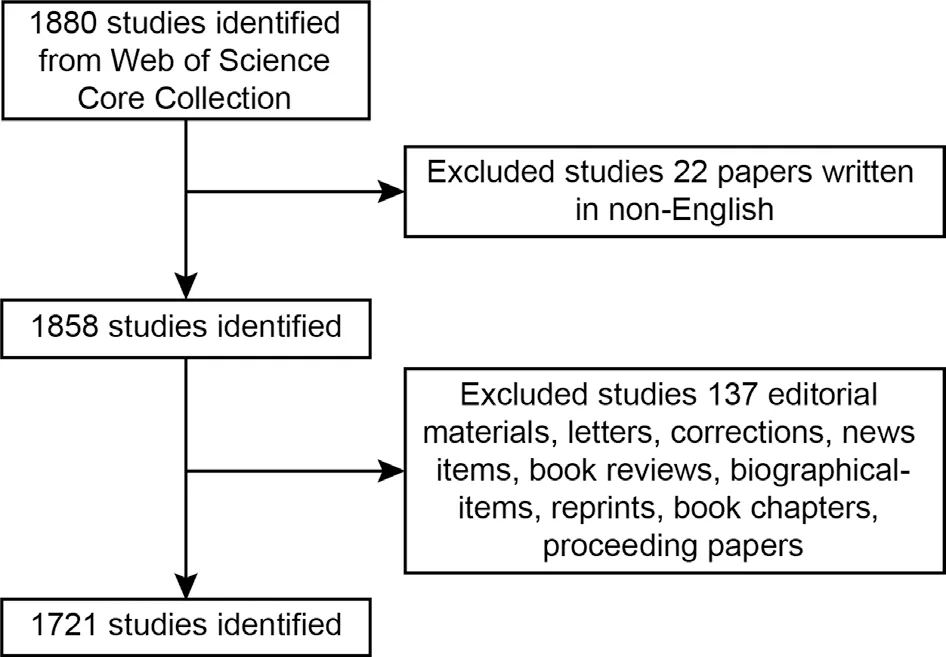
Figure 1 Flow diagram of the PACD research inclusion process PACD: Primary angle-closure disease.

Figure 2 The number of publications and citations related to PACD worldwide per year PACD: Primary angle-closure disease.
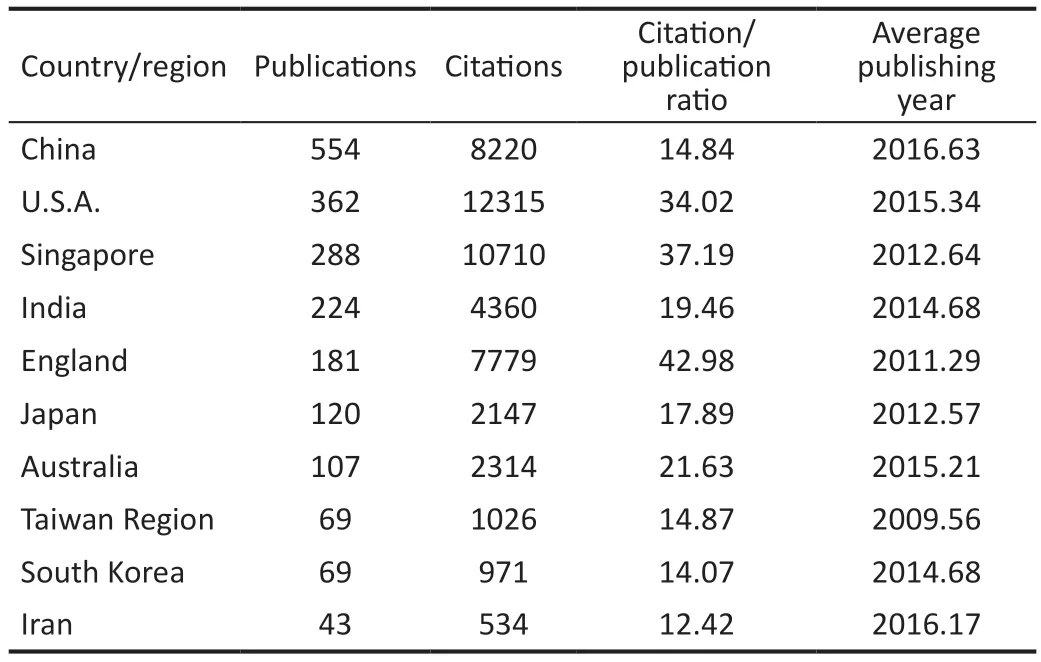
Table 1 Top 10 countries/regions with the most publications in PACD research
Journals Publishing Research on PACDMore than half of the publications in this field were published in 10 journals(885, 51.42%).TheInvestigative Ophthalmology Visual Sciencepublished the most articles (259, 15.05%).TheJournal of GlaucomaandOphthalmologyranked second and third with 172 and 95 publications, while theBritish Journal ofOphthalmology, theAmerican Journal of Ophthalmology, andClinical and Experimental of Ophthalmologypublished more than 50 articles ranked fourth to sixth.The top 10 journals with the most publications are all specialized journals of ophthalmology (Figure 4).The analysis of highly cited articles showed that specialized journals have an incredible scientific impact on all scholars, and 8 of the top 10 highly cited articles were published in these specialized journals (Table 2),including 4 articles onOphthalmology, 2 articles on theArchives of Ophthalmology, 1 article on theBritish Journal ofOphthalmology, and 1 article on theSurvey of Ophthalmology.Other comprehensive high-impact journals, such as theLancetpublished one high-quality article in 2017.
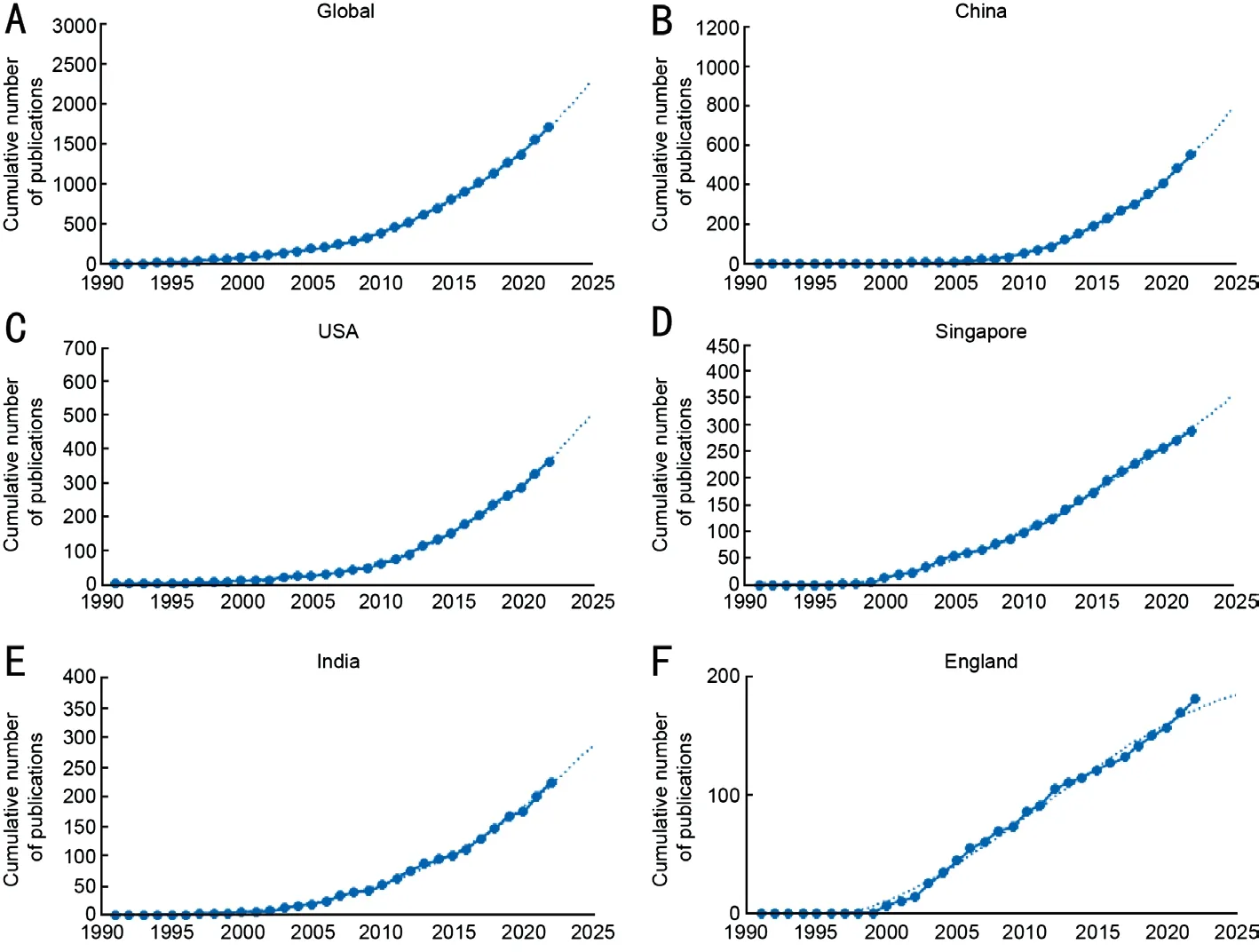
Figure 3 Fitting curves of publication growth trends in the global and top 5 countries/regions with the most publications.

Figure 4 Top 10 journals with the most publications in the PACD field PACD: Primary angle-closure disease.

Figure 5 Top 15 institutions with the most publications in the PACD field PACD: Primary angle-closure disease.
Institutions and Authors Publishing Research on PACDIn terms of institutions, the publications from the top 15 institutes accounted for 95.18% of all literature on PACD.The National University of Singapore and the Singapore National Eye Center had the highest number of publications (257, 14.93%and 255, 14.82%), followed by the Sun Yat-sen University(157, 9.12%), the University of London (143, 8.31%), the University College London (137, 7.96%) and Moorfields Eye Hospital NHS Foundation Trust (100, 5.81%; Figure 5).Among the top 15 institutions identified in this field, all are from the top 5 countries with the most publications, including 4 institutions from the United States and China, 3 from England, and 2 from Singapore and India.
The top 11 authors published a total of 784 articles, accounting for 45.55% of all publications in the PACD field.Aung Tin from Singapore published 221 articles related to PACD with a total of 8187 citations, ranked first in both the number of publications and citations.Foster PJ from England,Nongpiur ME from Singapore, He Mingguang from China,and Friedman DS from the United States ranked second to fifth with 60 to 88 publications.However, according to thecitations, Foster PJ and Friedman DS ranked second and third with 5184 and 3719 citations, respectively.Among the top 11 authors, 5 authors are from Singapore and 4 from China.The other two are from the United States and England (Table 3).Time series analysis showed that the trends of publications by authors from the United States and England are earlier (APY of 2012-2013), followed by authors from Singapore (APY of 2014-2016).Chinese authors published the latest publications(APY of 2015-2018), especially Professor Sun Xinghuai (APY of 2018.26).
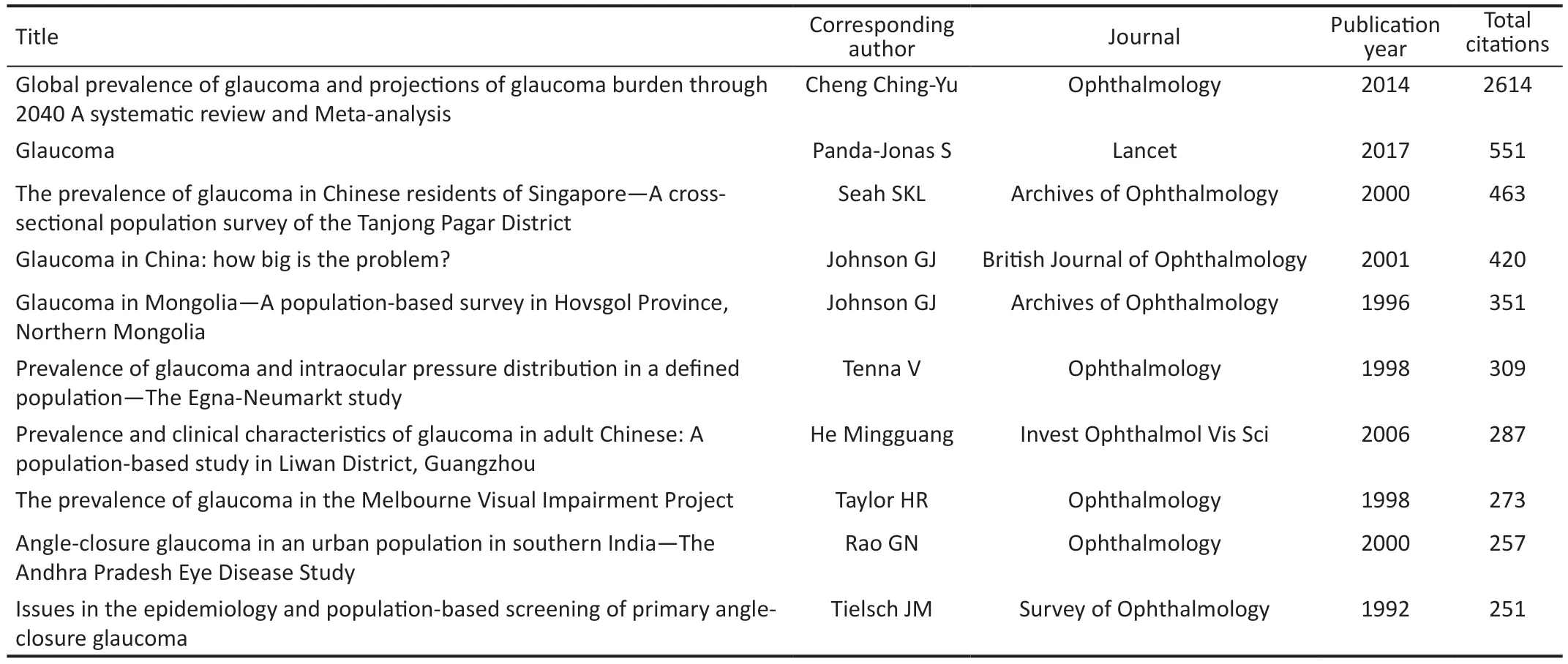
Table 2 Top 10 publications with the most citations in PACD research
Analysis of Keywords and Hotspots in PACDThe keywords that occurred in the titles and abstracts of all 1721 publications were analyzed by ⅤOSviewer.The 87 keywords that appeared more than 30 times were included and classified into 3 clusters on the map (Figure 6A).Circles of larger size represent the keywords that appeared at higher frequencies.The hotspots of PACD research based on the map in the past decade were mainly: epidemiology, glaucoma-related pathogenesis research, OCT and other imaging examinations,and glaucoma surgical management.Within cluster 1 (red),the primary keywords included prevalence (419 times), IOP(202 times), progression (86 times), risk (80 times), genomewide association (GWA, 51 times), expression (37 times), and aqueous-humor (34 times).In cluster 2 (green), glaucoma (681 times), OCT (190 times), UBM (151 times) and parameters(70 times) occurred frequently.In cluster 3 (blue), the main keywords were eyes (235 times), phacoemulsification (145 times), trabeculectomy (118 times), cataract (79 times), and cataract-surgery (66 times).
All keywords were colored according to the average publication time by ⅤOSviewer.Keywords that appeared relatively earlier were colored blue, and keywords with amore recent appearance were colored yellow (Figure 6B).Keywords shown in blue, such as cluster 3 appeared earlier.Keywords shown in yellow such as GWA (APY of 2018.29),susceptibility loci (APY of 2018.50), lens extraction (APY of 2018.81), combined phacoemulsification (APY of 2016.89)and OCT (APY of 2016.33) appeared recently.Genetic studies may be a new research trend in the PACD field, OCT and phacoemulsification have also attracted wide attention in the past five years.
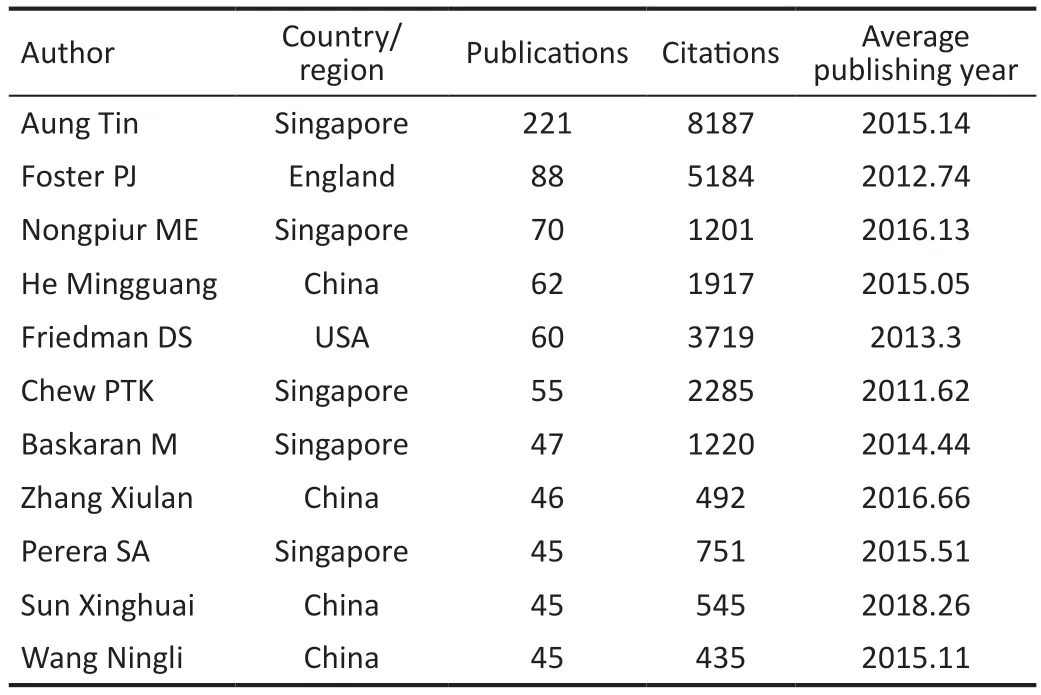
Table 3 Top 11 authors with the most publications in PACD research
DISCUSSION
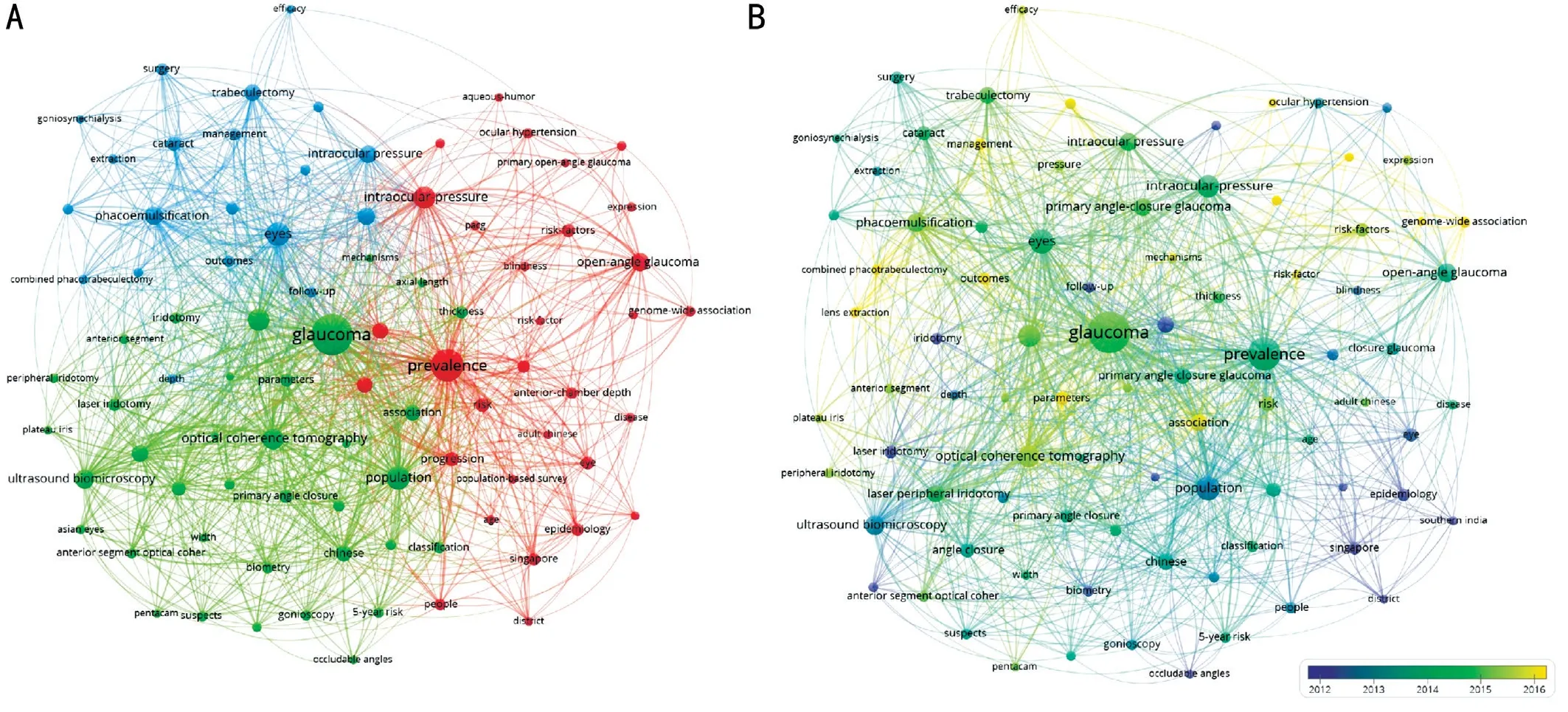
Figure 6 The analysis of keywords in PACD field A: Mapping of keywords.All keywords were divided into 3 clusters and given different colors.The circle with a larger size represented a higher frequency.B: Distribution of keywords based on the average publication time.Yellow indicates a recent appearance and blue indicates an early appearance.PACD: Primary angle-closure disease.
In this study, we analyzed the global publication trends of PACD-related research from 1991 to 2022 through bibliometrics.PACD is the general reference of a continuum form from PACS, PAC to PACG.Therefore, using “primary angle-closure”as the search topic can accurately target all relevant publications regarding to PACD.Previous bibliometric analysis have focused on glaucoma[21-23], POAG[31], application of stem cells in glaucoma[32].As far as we know, this is the first bibliometric analysis regarding to PACD.We observed a steady growth in the global cumulative number of publications and citations over time.After 2010, the number of publications exceeded 50 per year, and the increase has been faster and faster each year.This indicated that PACD gradually came into focus and remained an important field in ophthalmology.Funding availability is also an important contributor to this growth.The increase in general academic funding, and PACDspecific funding from governments and corporations, led to a growing number of academic institutions, and further increased publications.
The United States ranked first in the total number of citations and second in the total number of publications.Singapore ranked second in the sum of citations and third in the sum of publications.The two countries started PACD research very early, and still make great contributions to the field of PACD.China ranked first in the total number of publications.Rapid growth has been observed in the time curve since 2013, more than half of the total publications were published after 2015 in China, based on the APY of 2016.63.Significantly, China accounted for one-third of the global number of publications in 2019-2022, indicating the gradually indispensable position of China in the field.China has given growing attention to PACD,which may be attributed to the increased scientific prowess of this country and the heavy disease burden of approximately 7 million people affected in this country[33].Ethnicity is an important risk factor for PACD, and Asia has the highest PACG prevalence of 0.96% throughout the world[34].In fact,among the top ten countries with the most publications, six were located in Asia, suggesting that the heavy disease burden is a strong motivation for academic research.Notably, there is a disproportionality between the number of publications and the number of citations from England, Singapore, and the USA.This is likely due to a combination of factors.First,the citation frequency in other countries including China may be lower due to differences in language and cultural norms,while the language used in the US, England, and Singapore are English, leading to greater recognition and citation of their research.Plus, fewer publications in these countries are indexed in international databases.Second, there may be differences in research quality.England, Singapore, and the US are broadly considered to be world-leading nations in research quality and output.The researchers in these countries may also come from more prestigious institutions and have greater access to resources for conducting high-quality research, which may also contribute to the higher citation rates.At last, China has a much larger population and a number of educational institutions, which leads to more publications, as well as larger academic standards differences between institutions.
All the top 15 institutions in research on PACD were from the top 5 countries with the most publications and citations.Among them, four institutions were from the United States and four were from China.Remarkably, Singapore occupied the two most productive institutions in the world.We also noticed that more than 95% of all the literature on PACD was from the top 15 institutes.This suggests that good institutions that offer superior conditions for research including advanced equipment, standardized systems, adequate funding, and professional researchers, could bring significant contributions to an academic field.Journals of ophthalmology such asInvestigative Ophthalmology and Visual Science,Journal of Glaucoma, andOphthalmologywere the top 3 journals with the most publications of research on PACD.Thus, they are the primary journals involved in the field of PACD, future developments are more likely to be published in these journals as well.Among the top 11 authors with the most publications, five came from Singapore and four came from China.Aung Tin from Singapore Eye Res Institution has published most papers, he followed up on the long-term progress of the disease, especially on the treatment and outcome of acute primary angle-closure.Foster PJ investigated the prevalence of PACG in a wide range of regions around the world.Nongpiur ME is dedicated to finding novel anatomical risk factors for PACG and identifying novel genetic variants associated with PACG.The works of He Mingguang guided the use of LPI in PACG treatment.Collaborations between these leading researchers are worth attention.Many highly cited publications came from the cooperation between the authors, which is not limited to institutions or countries.This indicates the close connection of researchers in the PACD field, this model may contribute a lot to the development of this area.
Through keywords analysis, three clusters of PACD research hotspots have been categorized: epidemiology and glaucomarelated pathogenesis research, OCT and other imaging examinations, glaucoma surgical management.Epidemiologybased studies topped the citations over other clinical and investigative-based studies.In fact, among the top 10 publications with the highest number of citations, six were epidemiology studies.The reason may be that epidemiology research benefit from large data sets with a long-term follow-up period,they are generally prospective, which make them easier to establish reliable connections in comparison to retrospective studies that use data collected after the fact.Researchers often refer to epidemiology studies in the introduction section of a publication, this is because epidemiology studies provide valuable insight into the prevalence, causes, and risk factors of diseases, through which researchers found public health concerns, made hypotheses, and designed protocols to determine the relationship between certain exposure or interventions with health outcome.However, with respect to the latest focus, the other clusters have attracted more attention.Gonioscopy remains the most important diagnostic method and the gold standard for assessing the presence and degree of angle-closure[7].However, it is highly subjective and its findings vary with the amount of light and mechanical compression in the eye during examination[35].More objective and quantitative imaging devices were developed, such as UBM and anterior segment OCT (AS-OCT).Imaging of structures posterior to the iris is possible only with UBM,plateau iris and anterior positioning of the ciliary body were discovered by UBM in PACG eyes and determined to be part of the non-pupillary block mechanism of PACG[36-37].ASOCT utilizes optical signals to obtain high-resolution images,compared to gonioscopy and UBM, the technique is quick,non-contact, and depends less on the technicians’skills[11].ASOCT also has the advantage of a longer scan depth, which allows the visualization of the lens.Thicker lenses with greater lens vaults were found to be important anatomical features in angle-closure eyes by AS-OCT, revealing the crucial role of the lens in the pathogenesis of angle-closure disease[38-39].Other factors associated with narrow ACA found by UBM and AS-OCT include increased iris thickness, greater iris curvature, larger iris area, and iris volume[40-42].Anterior segment dimension parameters such as small anterior chamber depth (ACD), width, area, and volume are also associated with PACG[7,43].In recent years, the development of OCT technology, especially the application of SS-OCT in anterior segment imaging, has greatly improved image acquisition speed, resolution, and scan depth and width[9].Superior to the older forms of OCT, SS-OCT enables observation of the entire 360° circumference of the ACA, quantitative measurement of the extent of angle closure by measuring the irido-trabecular contact index, as well as the amount of PAS[44-45].Another advantage of SS-OCT is that it could provide the threedimensional reconstruction of the entire ACA[46].SS-OCT could also capture the anterior and posterior lens surfaces simultaneously, it helps researchers find that steeper anterior curvature, greater tilt and decentration of the lens may be novel anatomic characteristics of PACG[47-48].One of the weaknesses of OCT is that it requires manual localization of the scleral spur by users to produce results.This could be overcome by advances in artificial intelligence, where new deep-learning algorithms have been developed to help automatically localize the scleral spur, detect angle-closure, and even classify the PACG mechanism[49-51].A novel extension of OCT technology is OCTA, which provides high-resolution images of retinal and choroidal functional vessels[10].Studies using OCTA found a decrease in the retinal vessel density in PACG eyes, especially the peripapillary vessel density[52].Peripapillary vessel density was positively correlated with retinal nerve fiber layer and ganglion cell complex thickness, its diagnostic ability in PACG was comparable to that of retinal nerve fiber layer[53-54].The results illustrated the role of retinal microvascular in the pathogenesis of PACD.Future studies will continue to focus on the performance of these parameters in the prediction,diagnosis, and postoperative evaluation of PACD.
Surgical management of PACD includes filtration procedures and angle-widening procedures.Filtration procedure is usually applied in PACG eyes when medical and laser therapy fails to control IOP, the most common filtration surgery is trabeculectomy[12].Multiple studies have demonstrated the efficiency of trabeculectomy on ⅠOP reduction in PACG eyes,along with the comparability between trabeculectomy and other non-penetrating filtration procedures[55-58].The anglewidening procedure mainly refers to lens extraction surgery.A series of randomized controlled trials highlighted the effectiveness of lens extraction in angle‐closure population[14-15,59].Lens extraction is beneficial in lowering IOP and reducing the requirement for glaucoma drugs.Compared to LPI,lens extraction showed greater efficacy and was more costeffective[60].UBM and AS-OCT found that lens extraction contributed to the postoperative widening of ACA and increase of ACD not only by completely diminishing the impact of lens volume and pupillary block, but also by attenuating anterior positioning of the ciliary processes[61].Recently,combined phacoemulsification has received wide attention.It mainly refers to combined phacoemulsification with GSL or with trabeculectomy.Compared to phacoemulsification alone, there is not yet sufficient evidence to show that phaco-GSL adds additional lowering of IOP and reduction of postoperative medication use[62-63].However, it has been widely proved that phaco-GSL is superior in terms of reducing PAS extension, widening the anterior angle, and increasing the aqueous outflow facility[17,64].Meanwhile, compared to phacoemulsification alone, phaco-trabeculectomy was more effective but was associated with more postoperative complications[65-66].Future studies could continue to focus on the efficiency of combined phacoemulsification, as well as its application indications.
Family history is an important risk factor for PACD.A study showed that the siblings of PAC or PACG probands have an angle-closure prevalence of 36.7%, and in another study, the heritability of narrow-angle was calculated at 58.8%[67-68].However, the genetic cause of PACD has not yet been fully elucidated.Previous research chose candidate genes primarily based on biological plausibility or association with similar phenotypes.For example, tissue modeling genes have been found to participate in AL regulation, and the genetic variation of relevant genes including matrix metalloproteinase-9,frizzled-related protein, and heat shock protein 70 (which regulates the expression of matrix metalloproteinases) was gradually found to be associated with an increased risk of PACG[69-71].Other genetic risk factors for PACG include variants on endothelial nitric oxidase synthase, hepatocyte growth factor, and ATP binding cassette subfamily C member 5[72-73].Owing to GWA studies (GWAS), the susceptibility loci associated with PACG could be widely screened and identified[74].Eight loci were found according to GWAS, they are PLEKHA7 rs11024102, COL11A1 rs3753841, PCMTD1-ST18 rs1015213, EPDR1 rs3816415, CHAT rs1258267,GLIS3 rs736893, FERMT2 rs7494379, and DPM2-FAM102A rs3739821[75-76].These genes were further verified in different populations to be associated with PACG, however, the results varied across regions, this may be due to the selection bias of the original GWAS[77-80].Meanwhile, the role of these genes in the pathology of PACG is still unclear.The findings that all eight susceptibility loci were not relevant to AL nor ACD cast a veil over the pathogenesis of these variations[81-82].Another study showed a controversial result that only PCMTD1-ST18 rs1015213 was associated with ACD[83].In addition, the inclusion of these alleles in ACD only results in a 0.5% improvement in discriminating PACG, indicating the complexity of the genetic features in PACG[84].
The present study has the following limitations.First, we only enroll publications written in English from WoSCC database,because it can be difficult to find these non-English articles without knowing the language.The citations of non-English articles are easily low even if the research is valuable, making it difficult to draw a fair statistical conclusion.Most non-English journals are also not included in the WoSCC database,making them harder to track.This search strategy could lead to some valuable publications written in other languages being omitted.Another limitation is that the publication may discuss PACD as part of a larger research topic, so the authors may not have included PACD in their title, abstract nor keywords.To solve it, we can consider using broader search terms to capture all publications discussing PACD to increase searching thoroughness, but the accuracy of this targeted topic wouldn’t be ensured.Moreover, the latest publications lack time to be tested and accumulate citations, therefore,they are not emphatically analyzed in our study.Lastly, the writing form of the name of the authors was different in some articles, therefore, when counting for a total publication, some publications written by the same author were not assigned together.
In conclusion, the current study demonstrated the global trends and focus of PACD research over the past three decades through bibliometric analysis.China, the United States, and Singapore made outstanding contributions to the field of PACD research.TheInvestigative Ophthalmology Visual ScienceandJournal of Glaucomaare qualified journals for finding new progress regarding PACD.GWA, OCT, and combined phacoemulsification were considered the latest hotspots for future research.These findings would help researchers identify emerging themes and frontiers in the field of PACD and guide them in future endeavors.
ACKNOWLEDGEMENTS
Authors’contributions:Concept and design: Huang HL.Data collection: Huang HL, Wang KD.Analysis and interpretation:Huang HL, Wang GH.Writing the article: Huang HL, Wang GH.Critical revision: Sun XH.Final approval: all authors.
Foundation:Supported by Shanghai Clinical Research Key Project (No.SHDC2020CR6029).
Conflicts of Interest: Huang HL,None;Wang GH,None;Wang KD,None;Sun XH,None.
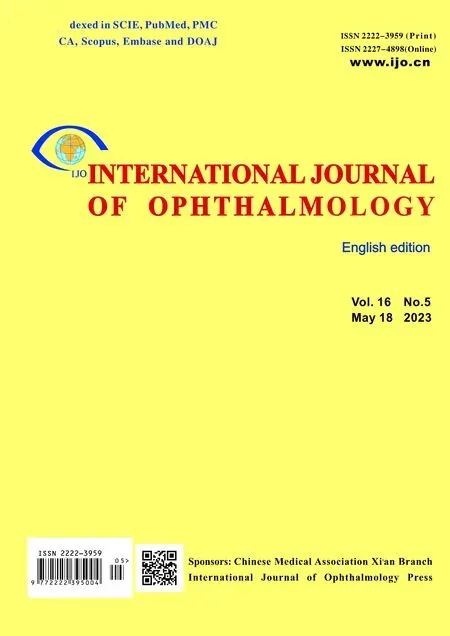 International Journal of Ophthalmology2023年5期
International Journal of Ophthalmology2023年5期
- International Journal of Ophthalmology的其它文章
- Comment on “Factors affecting single-step transepithelial photorefractive keratectomy outcome in the treatment of mild, moderate, and high myopia: a cohort study”
- Visual function and biofeedback training of patients with central vision loss: a review
- A case of Posner-Schlossman syndrome treated by gonioscopy-assisted transluminal trabeculotomy
- Mitochondrial dysfunction in glaucomatous degeneration
- Improving myopia awareness via school-based myopia prevention health education among Chinese students
- Ocular manifestations of children with atopic dermatitis in Saudi Arabia
